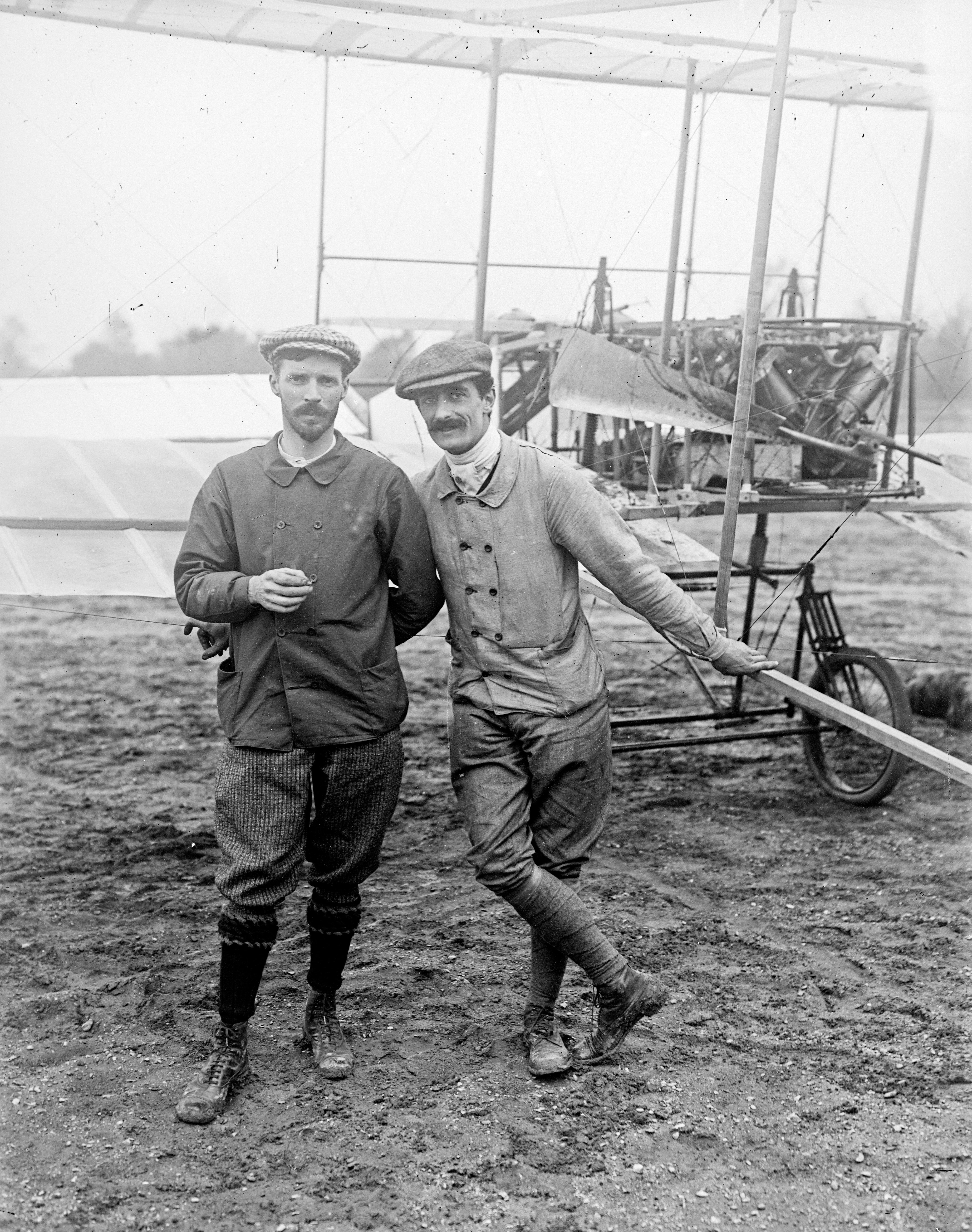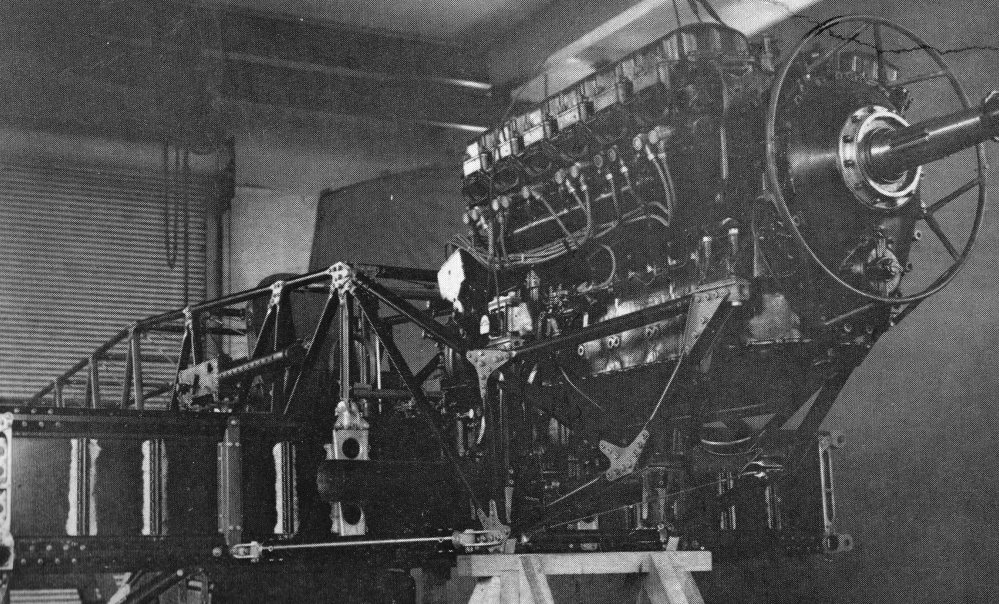|
Air-to-ground Communication
Air-to-ground communication was first made possible by the development of two-way aerial telegraphy in 1912, soon followed by two-way radio. By the Second World War, radio had become the chief medium of air-to-ground and air-to-air communication. Since then, transponders have enabled pilots and controllers to identify planes automatically, greatly improving air security. Most recently, in addition to sophisticated radio and Global Positioning System, GPS systems, the unmanned aerial vehicle, or drone, has revolutionised aerial surveillance and combat. Early systems The early days of flight proved quite difficult for air-to-ground communication. Ground crews would rely on colored paddles, hand signs and other visual aids. This was effective for ground crews, but it offered no way for pilots to communicate back. In the beginning of World War I planes were not outfitted with radios, so soldiers used large panel cut outs to distinguish friendly forces. These cut outs could also be used ... [...More Info...] [...Related Items...] OR: [Wikipedia] [Google] [Baidu] |
Voisin-Farman I
The 1907 Voisin biplane (referred to as the Voisin No. I by the 1913 edition of ''Jane's All the World's Aircraft''),The name ''Voisin I'' was later used by the French military as the designation for the Le Rhône 9C, Rhône powered versions of the Voisin L was Europe's first successful powered aircraft, designed by aeronautical engineer and manufacturer Gabriel Voisin. It was used by the French aviator Henri FarmanBorn in France to British father, Henri (or Henry) Farman took French nationality in 1937 to make the first heavier-than-air flight lasting more than a minute in Europe, and also to make the first full circle. The first examples of the aircraft were known by the name of their owners, for instance the Delagrange I, or the Henri Farman n°1. Farman made many modifications to his aircraft, and these were incorporated into later production aircraft built by Voisin. The type enjoyed widespread success, and around sixty were built. Background Between 1904 and 1908, ther ... [...More Info...] [...Related Items...] OR: [Wikipedia] [Google] [Baidu] |
Short Sunderland
The Short S.25 Sunderland is a British flying boat Maritime patrol aircraft, patrol bomber, developed and constructed by Short Brothers for the Royal Air Force (RAF). The aircraft took its service name from the town (latterly, city) and port of Sunderland in North East England. Developed in parallel with the civilian Short Empire, S.23 ''Empire'' flying boat, the flagship of Imperial Airways, the Sunderland was developed specifically to conform to the requirements of British Air Ministry List of Air Ministry specifications#1930.E2.80.931939, Specification R.2/33 for a long-range patrol/reconnaissance flying boat to serve with the Royal Air Force. Sharing several similarities with the S.23, it had a more advanced aerodynamic hull and was fitted with various offensive and defensive armaments, including machine gun Gun turret#Aircraft, turrets, bombs, Parachute mine, aerial mines, and depth charges. The Sunderland was powered by four Bristol Pegasus, Bristol Pegasus XVIII radial e ... [...More Info...] [...Related Items...] OR: [Wikipedia] [Google] [Baidu] |
Aircraft Marshalling
Aircraft marshalling is visual signalling between ground personnel and pilots on an airport, aircraft carrier or helipad. Activity Marshalling is one-on-one visual communication and a part of aircraft ground handling. It may be as an alternative to, or additional to, radio communications between the aircraft and air traffic control. The usual equipment of a marshaller is a reflective safety vest, a helmet with acoustic earmuffs, and gloves or marshalling wands – handheld illuminated beacons. At airports, the marshaller signals the pilot to keep turning, slow down, stop, and shut down engines, leading the aircraft to its parking stand or to the runway. Sometimes, the marshaller indicates directions to the pilot by driving a "Follow-Me" car (usually a yellow van or pick-up truck with a checkerboard pattern) prior to disembarking and resuming signalling, though this is not an industry standard. At busier and better equipped airports, marshallers are replaced on some stands wi ... [...More Info...] [...Related Items...] OR: [Wikipedia] [Google] [Baidu] |
Air Navigation
The basic principles of air navigation are identical to general navigation, which includes the process of planning, recording, and controlling the movement of a craft from one place to another. Successful air navigation involves piloting an aircraft from place to place without getting lost, not breaking the laws applying to aircraft, or endangering the safety of those on board or on the ground. Air navigation differs from the navigation of surface craft in several ways; aircraft travel at relatively high speeds, leaving less time to calculate their position en route. Aircraft normally cannot stop in mid-air to ascertain their position at leisure. Aircraft are safety-limited by the amount of fuel they can carry; a surface vehicle can usually get lost, run out of fuel, then simply await rescue. There is no in-flight rescue for most aircraft. Additionally, collisions with obstructions are usually fatal. Therefore, constant awareness of position is critical for aircraft pilots. The ... [...More Info...] [...Related Items...] OR: [Wikipedia] [Google] [Baidu] |
Infrared Strobe
A beacon is an intentionally conspicuous device designed to attract attention to a specific location. A common example is the lighthouse, which draws attention to a fixed point that can be used to navigate around obstacles or into port. More modern examples include a variety of radio beacons that can be read on radio direction finders in all weather, and radar transponders that appear on radar displays. Beacons can also be combined with semaphoric or other indicators to provide important information, such as the status of an airport, by the colour and rotational pattern of its airport beacon, or of pending weather as indicated on a weather beacon mounted at the top of a tall building or similar site. When used in such fashion, beacons can be considered a form of optical telegraphy. For navigation Beacons help guide navigators to their destinations. Types of navigational beacons include radar reflectors, radio beacons, sonic and visual signals. Visual beacons range from sma ... [...More Info...] [...Related Items...] OR: [Wikipedia] [Google] [Baidu] |
Unmanned Aerial Vehicle
An unmanned aerial vehicle (UAV) or unmanned aircraft system (UAS), commonly known as a drone, is an aircraft with no human pilot, crew, or passengers onboard, but rather is controlled remotely or is autonomous.De Gruyter Handbook of Drone Warfare; 2024. e-ISBN (PDF) 978-3-11-074203-9.H. Pan; M. Zahmatkesh; F. Rekabi-Bana; F. Arvin; J. HuT-STAR: Time-Optimal Swarm Trajectory Planning for Quadrotor Unmanned Aerial Vehicles IEEE Transactions on Intelligent Transportation Systems, 2025. UAVs were originally developed through the twentieth century for military missions too "dull, dirty or dangerous" for humans, and by the twenty-first, they had become essential assets to most militaries. As control technologies improved and costs fell, their use expanded to many non-military applications. These include aerial photography, area coverage,F. Rekabi-Bana; Hu, J.; T. Krajník; Arvin, F.,Unified Robust Path Planning and Optimal Trajectory Generation for Efficient 3D Area Coverage of ... [...More Info...] [...Related Items...] OR: [Wikipedia] [Google] [Baidu] |
Transponder
In telecommunications, a transponder is a device that, upon receiving a signal, emits a different signal in response. The term is a blend of ''transmitter'' and ''responder''. In air navigation or radio frequency identification, a flight transponder is an automated transceiver in an aircraft that emits a coded identifying signal in response to an interrogating received signal. In a communications satellite, a satellite transponder receives signals over a range of uplink frequencies, usually from a satellite ground station; the transponder amplifies them, and re-transmits them on a different set of downlink frequencies to receivers on Earth, often without changing the content of the received signal or signals. Satellite/broadcast communications A communications satellite’s channels are called transponders because each is a separate transceiver or repeater. With digital video data compression and multiplexing, several video and audio channels may travel through a single tr ... [...More Info...] [...Related Items...] OR: [Wikipedia] [Google] [Baidu] |
The Daily Telegraph
''The Daily Telegraph'', known online and elsewhere as ''The Telegraph'', is a British daily broadsheet conservative newspaper published in London by Telegraph Media Group and distributed in the United Kingdom and internationally. It was founded by Arthur B. Sleigh in 1855 as ''The Daily Telegraph and Courier''. ''The Telegraph'' is considered a newspaper of record in the UK. The paper's motto, "Was, is, and will be", was included in its emblem which was used for over a century starting in 1858. In 2013, ''The Daily Telegraph'' and ''The Sunday Telegraph'', which started in 1961, were merged, although the latter retains its own editor. It is politically conservative and supports the Conservative Party (UK), Conservative Party. It was moderately Liberalism, liberal politically before the late 1870s.Dictionary of Nineteenth Century Journalismp 159 ''The Telegraph'' has had a number of news scoops, including the outbreak of World War II by rookie reporter Clare Hollingworth, desc ... [...More Info...] [...Related Items...] OR: [Wikipedia] [Google] [Baidu] |
Special Operations Executive
Special Operations Executive (SOE) was a British organisation formed in 1940 to conduct espionage, sabotage and reconnaissance in German-occupied Europe and to aid local Resistance during World War II, resistance movements during World War II. SOE personnel operated in all territories occupied or attacked by the Axis powers, except where demarcation lines were agreed upon with Britain's principal Allies of World War II, Allies, the United States and the Soviet Union. SOE made use of neutral territory on occasion, or made plans and preparations in case neutral countries were attacked by the Axis. The organisation directly employed or controlled more than 13,000 people, of whom 3,200 were women. Both men and women served as agents in Axis-occupied countries. The organisation was dissolved in 1946. A memorial to those who served in SOE was unveiled in 1996 on the wall of the west cloister of Westminster Abbey by the Queen Elizabeth The Queen Mother, Queen Mother, and in 2009 on t ... [...More Info...] [...Related Items...] OR: [Wikipedia] [Google] [Baidu] |
S-Phone
The S-Phone system was a UHF duplex radiotelephone system developed during World War II for use by Special Operations Executive agents working behind enemy lines to communicate with friendly aircraft and coordinate landings and the dropping of agents and supplies. The system was composed of a "Ground" transceiver, designed by Captain Bert Lane, and an "Air" transceiver designed by Major Hobday, both of the Royal Signals. Description The "Ground" set - which was to be used by agents on the ground - weighed about including batteries and was typically worn attached to its operator with two canvas straps. It was a highly directional unit which required the operator to face the path of the aircraft. It had the useful trait that transmitted signals could not be picked up by ground monitoring stations more than one mile distant; however, its signal was only good to , which brought the aircraft within range of flak Anti-aircraft warfare (AAW) is the counter to aerial warfare a ... [...More Info...] [...Related Items...] OR: [Wikipedia] [Google] [Baidu] |
Hawker Hurricane
The Hawker Hurricane is a British single-seat fighter aircraft of the 1930s–40s which was designed and predominantly built by Hawker Aircraft Ltd. for service with the Royal Air Force (RAF). It was overshadowed in the public consciousness by the Supermarine Spitfire during the Battle of Britain in 1940, but the Hurricane inflicted 60% of the losses sustained by the ''Luftwaffe'' in the campaign, and fought in all the major theatres of the Second World War. The Hurricane originated from discussions between RAF officials and aircraft designer Sir Sydney Camm about a proposed monoplane derivative of the Hawker Fury biplane in the early 1930s. Despite an institutional preference for biplanes and lack of interest by the Air Ministry, Hawker refined its monoplane proposal, incorporating several innovations which became critical to wartime fighter aircraft, including retractable landing gear and the more powerful Rolls-Royce Merlin engine. The Air Ministry ordered Hawker's ''Interce ... [...More Info...] [...Related Items...] OR: [Wikipedia] [Google] [Baidu] |









